The region of Boka kotorska is situated on the south-east of Dubrovnik and Konavle, along the Adriatic coast from Herceg Novi to very near the town of Bar. It was named after the town of Kotor, which is placed in a fascinating fjord.Croatian benedictins in Boka kotorska had their abbeys since at least the year 1066. There were at least seven of such abbeys:- Sv. Juraj near Perast,
- Sv. marija de Resson,
- Sv. Luka in rtoli, Sv. Mihovil in Prevlaka,
- Sv. Nikola from Petranac,
- Sv. Petar from Gradac, and
- Sv. Marko de Pinita.
The benedictines in Boka kotorska appear in the 9the or the beginning of the 10th century. A Bull of pope Clement III from 1089, and to a Bull of pope Calisto II from 1124, confirm that on the territory of Duklja (Doclea) there were abbeys that were designated as latinorum, graecorum et sclavorum (Glagolitic benedictine abbeys), under the auspices of Duklja-Bar archbishops. The source of this information is [Ivan Ostojić].Boka kotorska was annexed to Montenegro in 1945. At that time it was populated mostly by Croatian Catholics (Bokelji). Now the ethnic situation in this region is entirely different, especially after 1991.
Archbishop Vicko Zmajevic (1670.-1745.), born in Perast, brought the Bar Catholics (from the environs of the city of Bar, descendants of Red Croatians), endangered by the Turks, to the environs of Zadar where they live also today. He built a school "Collegium Illiricum" or "Seminarium Zmajoillyricum" in Zadar for educating Glagolitic priests (today archbishops school "Zmajevic"). His nephew Matija Zmajevic was a famous admiral of the Russian tsar Peter the Great, see below.
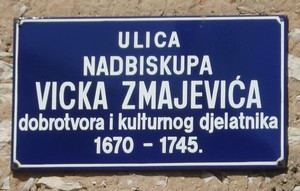
A street in Zadar (Arbanasi) named after Vicko Zmajevic, founder of Zmajevicevo glagoljasko sjemeniste in Zadar
Glagoljica u Arbanasima kod Zadra
Photos: Moris Nakic, Soni Banic, Dario Tikulin i don Zdenko Milic (Zadar)
In Perast the first nautical school was founded by the end of the 17th century. It is considered to have been founded by Marko Martinovic (1663-1716), a famous Boka mariner. In 1698 the Russian Emperor Peter the Great sent 16 young Russian noblemen to Boka to attend maritime studies in Perast, in order to be able to organize the future Russian Navy. See Croatian Encyclopaedia (Boka kotorska in Volume III).
The Bokeljs had a very strong fleet, which counted as many as 300 ships in the 18th century. Boka was a rival to Dubrovnik and Venice. It is worth mentioning that one of the Bokeljs - Matija Zmajevic (1680-1735) - was the admiral of the Baltic navy and the ship-builder of the famous Russian tsar Peter I the Great, and for whom he built a fleet in Voronez.
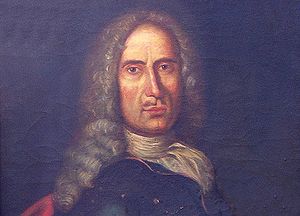
Matija Zmajevic had great successes in maritime battles against Sweden, and for this reason he was decorated with the Order of Aleksandar Nevski by Empress Katarina. Peter I the Great took off his personal sword and donated it to Matija Zmajevic in recognition of his military successes. Matija Zmajevic had the honour to carry the crown of Romanov's during the funeral of Peter the Great in 1725. Zmajevic was buried with greatest military honours in the Catholic church in Moscow. Peter the Great sent some of his young officers (bolyars) to the town of Perast in Boka in order to study maritime sciences there. For more information see [Milos Milosevic, pp 244-251].
Marko Vojnovic from Hercegnovi organized the Russian marines on the Black Sea, and achieved the status of admiral. Matija Melada of Perast, a well known engineer of his time, arranged many Russian ports. See Croatian Encyclopaedia (Boka kotorska in Volume III).
Boka kotorska region is under the protection of UNESCO, due to its very rich Croatian cultural heritage. The region around the town of Kotor is situated in probably the most beautiful fjord in Europe. In 1979 there was an earthquake that destroyed or seriously damaged numerous cultural monuments.
Very important historical source for early Croatian history is Libellus Gothorum, a chronicle from the 12th century known in Croatia as Ljetopis popa Dukljanina. It was written by Archbishop Grgur of Bar, born in Zadar, and Bar is a coastal town near Boka kotorska. The chronicle represents the oldest historiographic work of Croatian Middle Ages.
It is interesting that Tripun Kotoran, a Kotor goldsmith, worked on the court of Ivan Grozny in Moscow in 1476. One of the earliest Croatian typographers was Andrija Paltasic (~1450-1500), born in the town of Kotor. He was one of the best Venetian typographers around 1480, who printed more than 40 incunabula, among them the Bible in Italian language. We also mention by the way that a very old missal from the 12th century - the Kotor missal, is held in St. Petersburg, Russia.
Nikola Modruski (Lat. name Nicolaus Machinensis, Italian name Nicolo di Cattaro, ~1427-1480), born in Boka kotorska, was bishop of Modrus in Lika, Pope's representative at the court of Stjepan Tomasevic in Bosnia, and on the court of the Hungarian king Matijas Corvin in Budim, his huge library was left to the newly founded Vatican library (founded by Pope Sixto IV). In 1478/79 he wrote a treatise in defense of the Glagolitic Script which he sent from Rome to the Modrus Diocese. It is regarded to be the first polemic treatise in the history of Croatian literature, and it was written in the Glagolitic Script. Buried in the church of Sta Maria del popolo in Rome.
In the village of Bogdasic near Tivat, in the church of Sv. Petar, a Croatian Glagolitic inscription has been found. Also the Glagolitic mass (i.e. Catholic mass served in Croatian Church Slavonic language instead of Latin language) has been in use in the church. The same for the village of Kostanjica near the town of Perast. These two parishes were glagolitic in the 19th century as well. See [Pederin, p 247]. Many thanks to dr. Vanda Babic for information about the Bogdasic Glagolitic inscription.
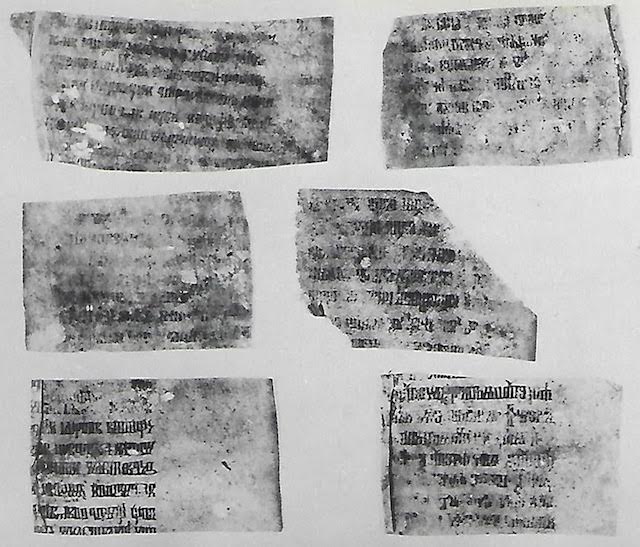
Fragments of a 15th century Croatian glagolitic breviary kept in the city of Kotor.
Photo by the courtesy of Mons. dr. Slavko Kovačić, Split.
Sea-captain Krsto Corko, born in Perast, was Spanish Marquis and Governor of Balearic Islands in the second half of the 17th century.
Kristofor Ivanovic, a Canon of the town of Budva in Boka kotorska, published his Memorie teatrali in Venice in 1681. It was the first history of Venetian opera, covering the period of 1637 - 1681. Its 2nd edition appeared in 1687.
The first balloonist in Croatia was Karlo Mrazovic, who performed two balloon flights in Zagreb with his own balloons in 1789 and 1790. He was born in Boka kotorska. See [Croatia - Europe, III, Barok i prosvjetiteljstvo, p. 426, the article by Vladimir Muljevic].
Captain Petar Zelalic (Zhelalich), 18th century, born in Boka kotorska, was a member of the Order of Maltese Knights. He became famous after his ship defeated a huge Turkish ship called "The Ottoman Crown."
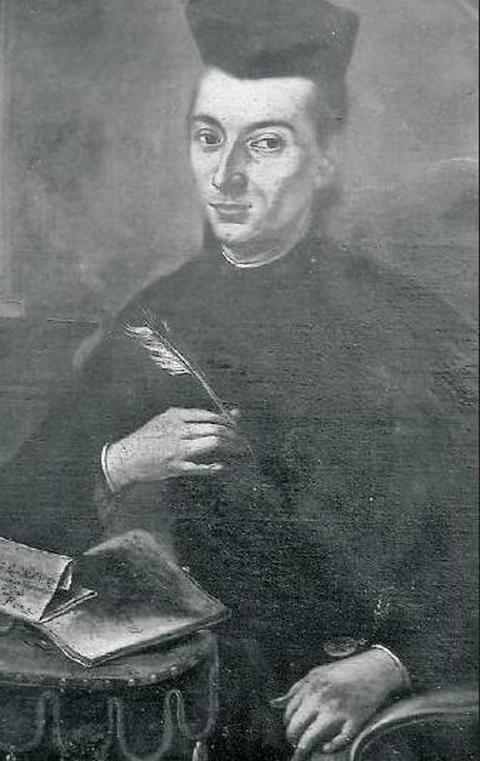
Josip Marinović
Josip Marinovic (1741 - 1801), was a Jesuit born in Perast - Kotor (in Boka kotorska, annexed to Montenegro in 1945), professor of theology in Venice. His friendship with an Armenian banker Serpos resulted in his interest in the history of Armenians. His assiduous research resulted in the book "Compendio storico...della nazione armena", published in Venice in 1783. The book was a great success. Though it was signed by Serpos, its true author was Marinovic. It represents the first history of Armenians published in Europe. It is interesting that the book had been extended and republished by Ivan Dominik Stratico (1732-1799), bishop on the Croatian island of Hvar. This book incited European interest for Armenian people and their culture. In particular, upon the initiative of the Vatican, supported by Austria and Russia, in 1830 the Turkish sultan admitted the very old Armenian Christian Church and allowed the Armenian Archdiocese to be founded in Constantinople. See [Gregory Peroche], p. 119, and [V. B. Lupis, O armensko-hrvatskim kontaktima].
Armenian and Croatian contacts described by Vinicije B. Lupis
In 1782 Krsto Mazarevic from the city of Kotor (in today's Montenegro) performed a flight in two balloons.
Another outstanding Croat is captain Ivan Visin born in Prcanj in Boka. His travel around the world started in Antwerpen in 1852 (his ship "Splendido", built in Rijeka, was 30m long, 311 metric tons of cargo) and ended successfully in Trieste in 1859, having sailed 101,000 nautical miles (the circumference of the Earth is 21,600 n.m.; the ship sailed in westward direction around the Earth, which is more difficult than in the opposite direction). Visin was only the sixth after Magellan to do a similar exploit.
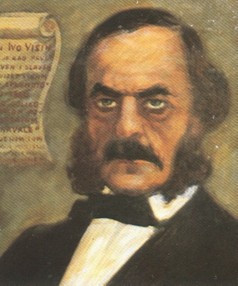
For his brave undertaking, which was of historical importance, he had been decorated by a flag of honour Merito navali by the Austrian Emperor (in fact, Visin was the only one who ever obtained such an honour). The trophy is held in Prcanj. Visin also became the honorary citizen of Trieste.
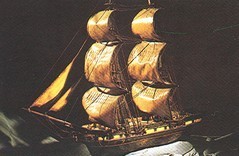
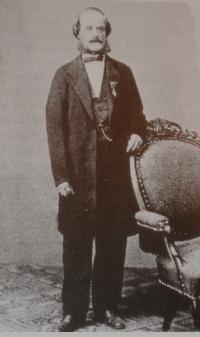
Ivo Visin in Trieste in 1860, photo from [I Croati di Trieste]
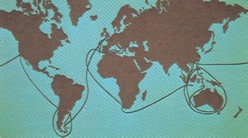
ĂĂĂĂĂĂĂĂĂÂ
Anton Lukovic (1815-1880), descendant of an old Croatian family from Boka kotorska, was a chief engineer in the project of building the Suez Canal (1859-1869).
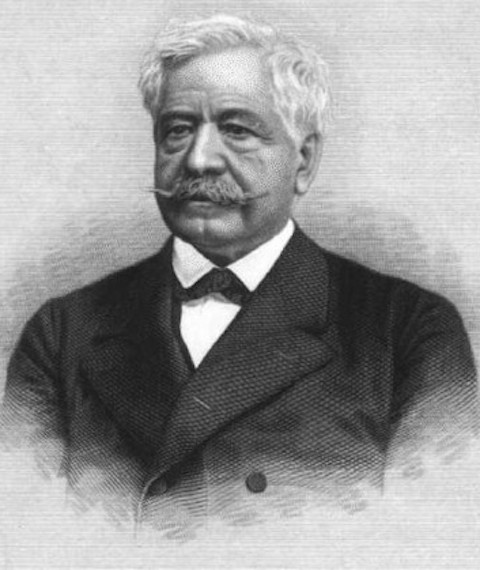
Anton Luković (1815-1880), one of the principal engineers
in the project of building the Suez Canal
Born in Prčanj, Luković was among the principal engineers who participated in building the Suez Canal (193.3 km), completed in 1869. He worked there as an Austrian architect and civil engineer.
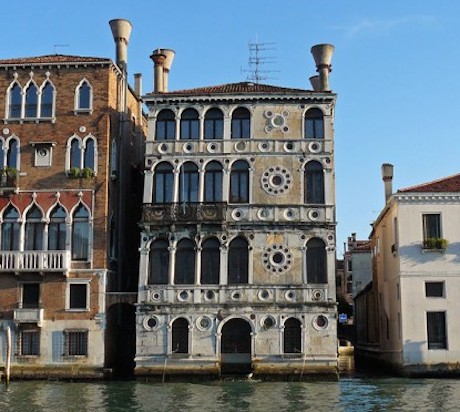
Luković's Dario Palace in Canal Grande in Venice
He was proprietor of a monumental palace Dario in Canal Grande in Venice, where he died in 1880. The palace appears on the work of art by Claude Monet, distinguished French painter, which is kept in the Museum of Art in Chicago. He also had a merchant house in Cardiff. An important fortress at the entrance of the port in Alexandria was built according to his project. During this work, he discovered three old-Egyptian columns from 16-14 century BC carved with hieroglyphics, which were subsequently solemnly donated to Austrian Emperor Franz Joseph I on the occasion of the official opening of the Suez Canal. The columns are now kept in Vienna, in the Egyptian Antiquities Room of the Museum of Art History (Kunsthistorisches Museum).
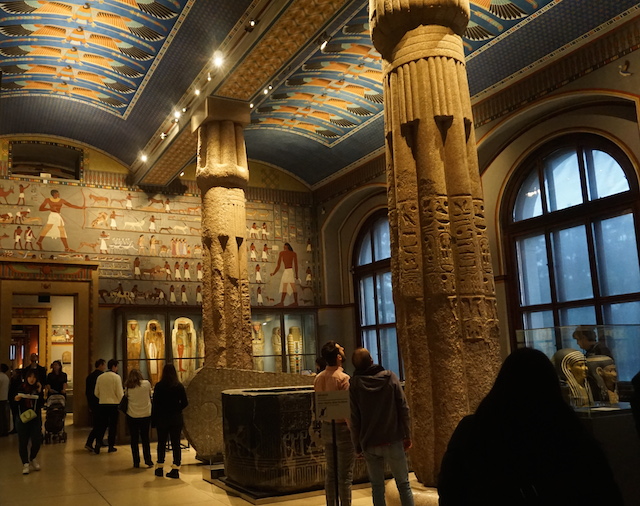
Egyptian pillars discovered by Anton Lukovic, placed in Kunsthistorisches Museum in Vienna.
Photo by
Tianlan Xie.
For his merits, Lukovic earned hereditary nobility from the Austrian Emperor, and the title of Lukovic de Ascrivio. For more details see an article by Siniša Luković appearing in [Vidmarović, Hrvati Boke kotorske kroz povijest, pp. 375-379].
The Bokelj Marine 809 (Bokeljska mornarica 809) is a confraternity whose aim is to preserve more than a thousand year's Croatian maritime tradition. In 809 the remains of St Tripun were brought by Croatian mariners from Asia Minor to Kotor. The Cathedral of St Tripun in Kotor is the oldest Croatian cathedral in this area built by Croats in 1166.
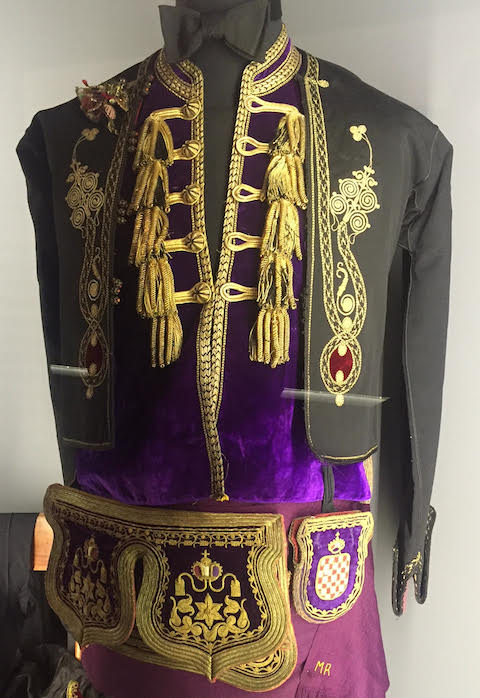
The Croatian Coat of Arms was a part of a solemn uniform of the Boka Marine (Bokeljska mornarica).
The suit, kept in the Croatian History Museum in Zagreb, is dating from the second half of the 19th century.
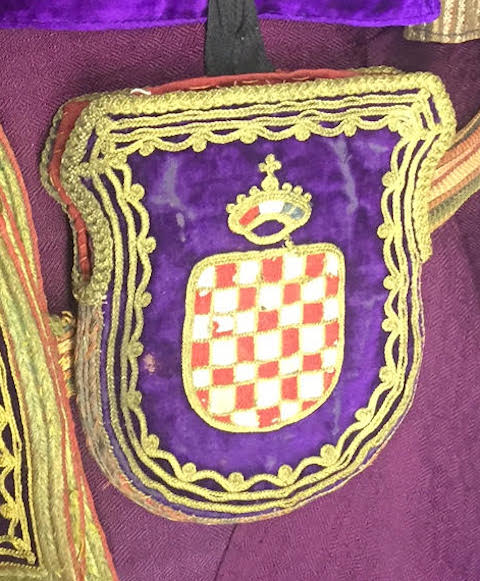
It is worth mentioning that New Yugoslavia participated at the international maritime exhibition EXPO'98 in Lisbon, Portugal, with Croatian cultural and maritime heritage of Boka kotorska. This very old and rich heritage was presented as Yugoslav without even mentioning that it belongs to the Croats in Boka kotorska. One can say that the Croats had in fact two pavilions in Lisbon: one belonging to the Republic of Croatia (generally considered as one of the most original pavilions on the exhibition), and the other hidden under the name of Yugoslavia.
Yugoslav press (and even some Croatian!) used to add an innocent number 1 to 809, to obtain 1809, thus reducing the rich history of Croatian mariners in Boka kotorska for no less than 1000 years!
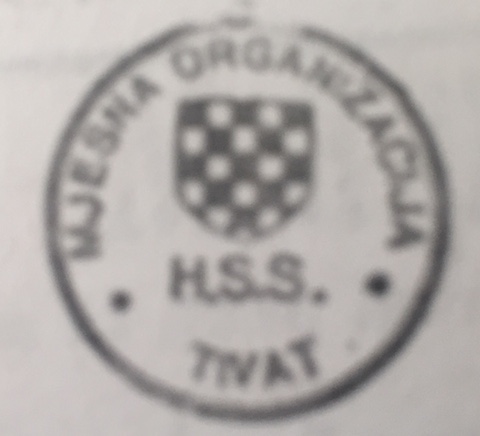
Seal of H.S.S. (Hrvatska seljačka stranka - Croatian Peasant Party)
in the town of Tivat in Boka kotorska, 1928. The founder and leader of H.S.S. was Stjepan Radic.
Note its Croatian Coat of Arms. Photo from [Vidmarovic, Prilog povijesti Hrvata Gornje i Donje Lastve].
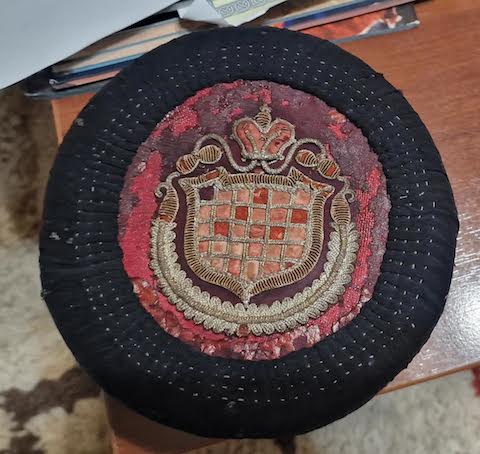
Boka kotorska cap from the second half of the 19th century, from the settelment of Spič (near the city of Bar),
containing the Croatian Coat of Arms.
Photo by the courtesy of Zvonimir Deković, Donja Lastva.
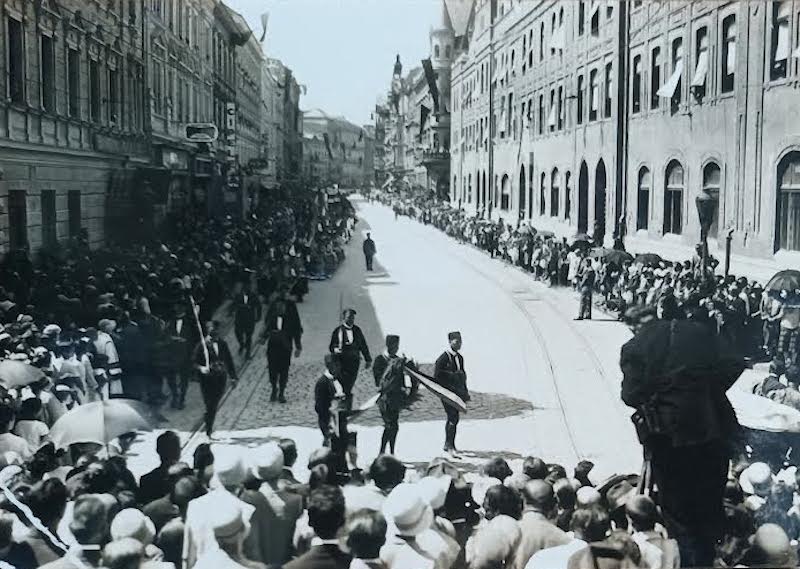
Plemenito Tielo Bokeljske mornarice (Noble Body of the Bokelj Marine = Admirality)
in Praška ulica (the Prague street) in Croatia's capital Zagreb, during the funeral of Stjepan Radić on 12th August 1928.
Photo by the courtesy of Zvonimir Deković, Donja Lastva.
A delegation of the Bokelj mariners from Boka kotorska participated with their traditional uniforms at the funeral of Stjepan Radic in Zagreb, after his assassination in the Yugoslav Parliament in Belgrade in 1928.
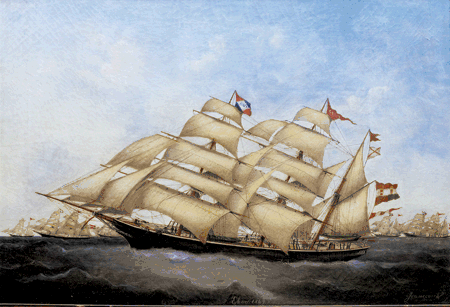
B. Ivankovic (1815-1898): A Kotor sailing ship, 19th century, source Matrix Croatica
Boka kotorska is also known as the Bay of Croatian saints. Out of eleven Croatian saints and blessed (St Leopold Mandic, St Nikola Tavelic, St Marko of Krizevci, Bl Augustin Kazotic, Bl Ozana of Kotor, Bl Jakov Zadranin, Bl Gracija of Mulo, Bl Julijan of Bale, Bl Alojzije Stepinac, Bl Ivan Merz, Bl Marija Petkovic), three of them are from Boka kotorska:
- St Leopold Bogdan Mandic (1866-1942),
- blessed Ozana Kotorka (Kata Kosic, 1493-1565),
- blessed Gracija from Mulo (1438-1508).
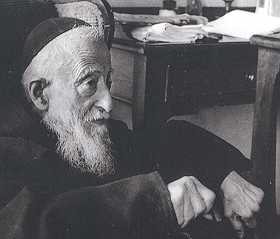
St Leopold Bogdan Mandic (1866-1942, memorial day 30th July) was born in Herceg Novi in Boka kotorska, and died in Padova, Italy. Physically malformed and delicate, having height only 1m 35cm, with clumsy walk and stuttering, he developed tremendous spiritual strength. Although he wanted to be a missionary in Eastern Europe, he spent almost all of his adult life in Italy, and lived in Padova from 1906 until the end of his life. He also spent one year in an Italian prison during WWI, since he did not want to renounce his Croatian nationality, see here. He dreamed unceasingly about going to the Orient, but one day he gave Communion to a very good person. And, as he described:
After finishing her thanksgiving, she came to me with this message: "Father, Jesus ordered me to say this to you: Your Orient is each of the souls you assist by hearing confessions." (see here).
He became known as Apostle of Confession and Apostle of Unity. Here is a famous prayer in honour of this forerunner of today's Ecumenism:
O God, source of life and love, you gave Saint Leopold a tremendous compassion for sinners and a desire for church unity. Through his prayers, grant that we may acknowledge our need of forgiveness, show love to others, and strive to bring about a living unity among Christians. Through Our Lord Jesus Christ, who lives and reigns for ever and ever. Amen.
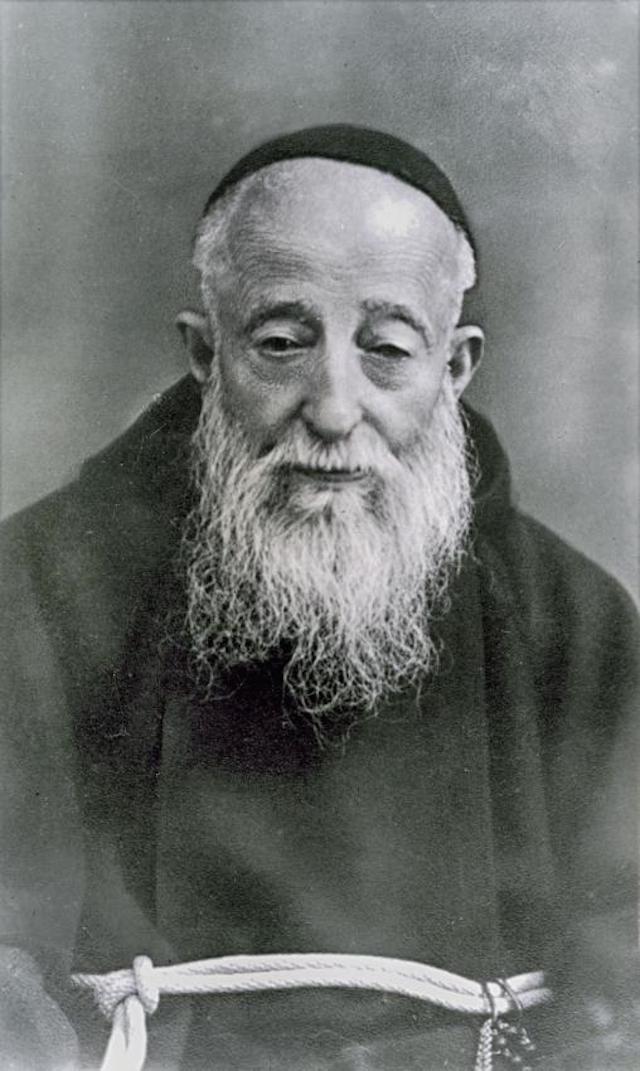
St Leopold Bogdan Mandić (1866-1942), Croatian saint,
Also the famous Pope Sixto V has Croatian roots from Boka kotorska on his father's side.
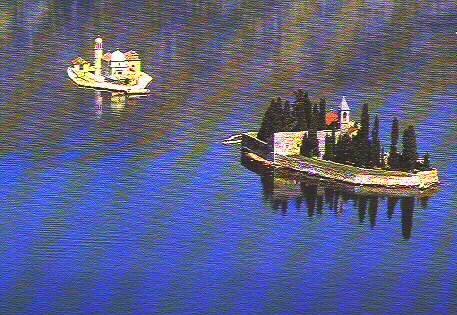 Out of 38 churches existing in the Kotor region (annexed to Montenegro in 1945) 36 are Catholic and only 2 are Orthodox (one of them was a gift of the Croats in Boka kotorska). On the photo you can see two beautiful churches on islets in the Boka bay, belonging to the Croatian Catholic community in Montenegro, built in the first half of the 17th century (Sveti Juraj and Gospa od Skrpjela near the town of Perast). It is interesting that the Church of Gospa od Skrpjela (in the photo) is built on an artificial island! Each year a procession of Croatian Catholics encircles in numerous fishing boats the island of Gospa od Skrpjela and pilgrims throw pebbles around it.
Out of 38 churches existing in the Kotor region (annexed to Montenegro in 1945) 36 are Catholic and only 2 are Orthodox (one of them was a gift of the Croats in Boka kotorska). On the photo you can see two beautiful churches on islets in the Boka bay, belonging to the Croatian Catholic community in Montenegro, built in the first half of the 17th century (Sveti Juraj and Gospa od Skrpjela near the town of Perast). It is interesting that the Church of Gospa od Skrpjela (in the photo) is built on an artificial island! Each year a procession of Croatian Catholics encircles in numerous fishing boats the island of Gospa od Skrpjela and pilgrims throw pebbles around it.
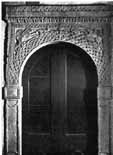 An important monument, showing uninterrupted presence of the Croats in Boka kotorska during many centuries, is the cathedral of St Tripun in the town of Kotor, built as early as 1166. As we have said, it represents the oldest known Croatian cathedral. Its ciborium is decorated with a beautiful interlace pattern which is even older than the church itself, and of the same type as numerous exotic interlace patterns found in many pre-Romanesque churches along the Croatian littoral. The town of Kotor has a surrounding wall which is about 5km long.
An important monument, showing uninterrupted presence of the Croats in Boka kotorska during many centuries, is the cathedral of St Tripun in the town of Kotor, built as early as 1166. As we have said, it represents the oldest known Croatian cathedral. Its ciborium is decorated with a beautiful interlace pattern which is even older than the church itself, and of the same type as numerous exotic interlace patterns found in many pre-Romanesque churches along the Croatian littoral. The town of Kotor has a surrounding wall which is about 5km long.
The benedictine order has been present in the region of Boka kotorska since the 9th century. Today this region has about a hundred Catholic churches and chapels.
Please, go to part II below.